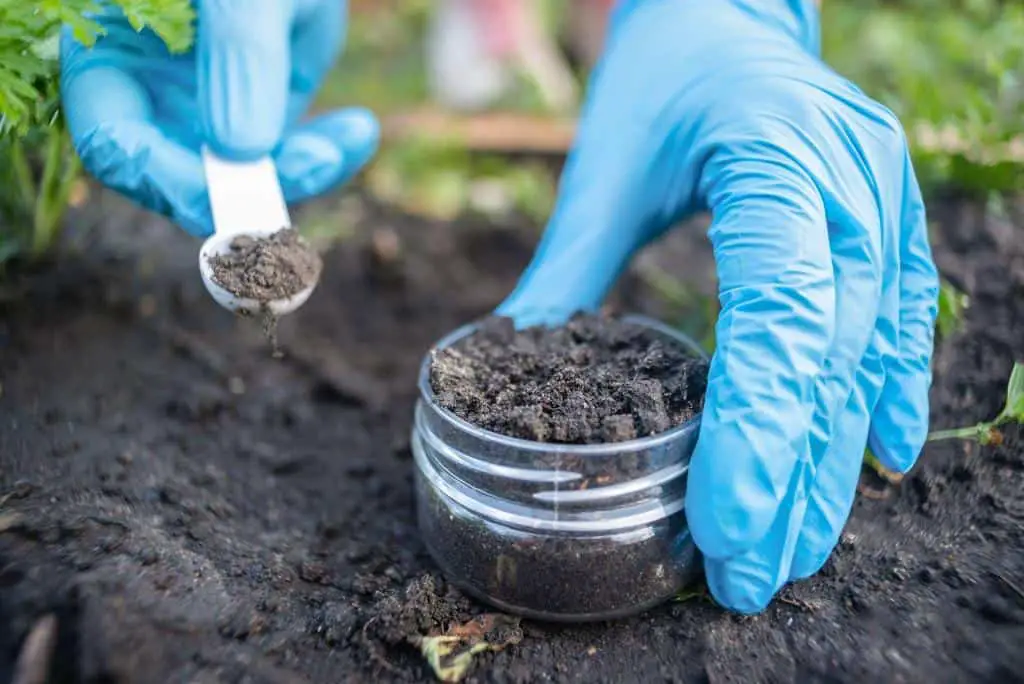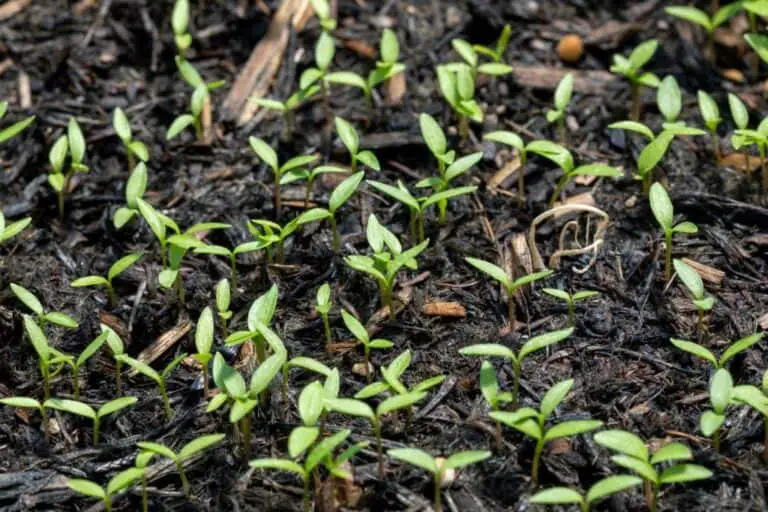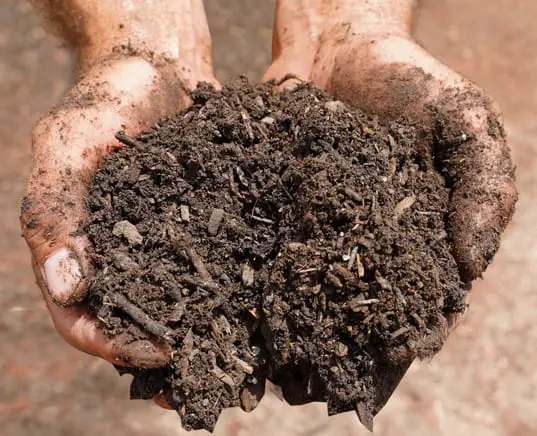Fertile Topsoil: Understanding Its Importance in Agriculture

Fertile topsoil is the unsung hero of agriculture, where seeds meet soil and abundant harvests await. This unassuming layer of earth holds the key to successful crop cultivation and sustains the very foundation of our food systems. But what makes fertile topsoil so remarkable?
Fertile topsoil is more than just a nutrient buffet; it’s a fortress against drought, a sanctuary for robust root systems, and a guardian of biodiversity. It’s a living, breathing entity, teeming with unseen life.
In this article, we embark on a journey to unravel the importance of fertile topsoil in agriculture, exploring its composition, its role in plant nutrition, and the indispensable methods to maintain and enhance its fertility. Get ready to unearth the secrets of this underground marvel and discover how it holds the key to a thriving harvest.
Definition and Composition of Fertile Topsoil
Fertile topsoil refers to the uppermost layer of soil, usually the top 5-10 inches, that is rich in essential nutrients, organic matter, and microorganisms necessary for healthy plant growth. It is a dynamic, living entity that supports the growth of crops by providing a hospitable environment for their roots to access nutrients and water.
Fertile topsoil is a remarkable blend of organic matter, minerals, and microorganisms that creates the perfect environment for plant growth. Let’s break down its composition:
- Organic Matter: The top layer of soil contains decaying plant and animal material, commonly referred to as organic matter. This organic matter enriches the soil by providing essential nutrients and improving its structure.
- Minerals: Fertile topsoil is rich in various minerals necessary for plant growth. These minerals, including nitrogen, phosphorus, and potassium, are often referred to as macronutrients. Additionally, there are micronutrients such as iron, zinc, and manganese that are required in smaller quantities.
- Microorganisms: Beneath the surface of fertile topsoil, a bustling community of microorganisms thrives. These microscopic organisms, such as bacteria, fungi, and earthworms, contribute to the soil’s fertility through nutrient cycling, decomposition of organic matter, and enhancing soil structure.
Characteristics of Fertile Topsoil
Fertile topsoil consists of a combination of minerals, organic matter, air, water, and various microorganisms. These components work in harmony to create an ideal environment for plant roots. The characteristics of fertile topsoil include:
- Dark color: Fertile topsoil often exhibits a dark color, indicating the presence of organic matter, such as decomposed plant and animal material.
- Crumbly texture: It has a crumbly texture that allows for proper root penetration, water infiltration, and air circulation.
- Good drainage: Fertile topsoil possesses the ability to drain excess water while retaining sufficient moisture for plant uptake.
- Nutrient-rich: It contains an abundance of essential nutrients, including nitrogen, phosphorus, potassium, and trace elements, vital for plant growth.
Importance of Fertile Topsoil for Agricultural Productivity
Fertile topsoil serves as the cornerstone of agricultural productivity. Its importance lies in the following aspects:
- Nutrient supply: Fertile topsoil provides plants with the necessary nutrients for growth, ensuring healthy development, and maximizing yield potential.
- Water retention: It has the capacity to retain moisture, allowing plants to access water during periods of drought or limited rainfall.
- Root development: Fertile topsoil offers a conducive environment for root growth and expansion, enabling plants to establish a strong foundation and access nutrients more efficiently.
- Biological activity: The presence of microorganisms in fertile topsoil enhances nutrient cycling, decomposition of organic matter, and disease suppression, contributing to overall soil health.
Formation of Fertile Topsoil
There are several natural processes that aid in the formation of fertile topsoil. These processes include:
- Weathering: Physical and chemical processes such as freezing, thawing, and the action of wind and water gradually break down rocks and minerals into smaller particles.
- Biological activity: The activities of soil organisms, including earthworms, bacteria, fungi, and other microorganisms, contribute to the formation of fertile topsoil. They aid in the decomposition of organic matter, release nutrients, and enhance soil structure.
- Soil erosion and deposition: The movement of water, wind, and ice can erode soil from one location and deposit it elsewhere. This process, known as erosion and deposition, plays a role in redistributing soil particles and contributing to the formation of fertile topsoil in new areas.
- Plant growth and root penetration: As plants grow and their roots penetrate the soil, they interact with the mineral and organic components, gradually enriching and enhancing the fertility of the topsoil layer.
Importance of Soil Testing

Regular soil testing is a valuable tool for farmers and gardeners to accurately assess the fertility of their topsoil. By analyzing soil samples, they can determine the nutrient levels and pH balance of the soil. This information allows them to make informed decisions regarding fertilization and soil amendments.
Soil testing helps identify any deficiencies or imbalances in nutrient levels, enabling farmers to tailor their fertilizer applications to meet the specific needs of their crops. By applying the right amount of nutrients, they can optimize plant growth and minimize environmental impacts caused by excessive fertilizer use.
Furthermore, soil testing can reveal the pH level of the soil. pH plays a critical role in nutrient availability for plants. Some plants thrive in acidic soil, while others prefer a more alkaline environment. By adjusting the pH through amendments like lime or sulfur, farmers can create an optimal growing environment for their crops.
It is important to note that soil testing should be conducted regularly, as soil conditions can change over time. By monitoring soil fertility, farmers can identify trends and make proactive adjustments to maintain the health and productivity of their topsoil.
How to Enhance Organic Matter Content in Topsoil
To enhance the organic matter content in topsoil and improve soil fertility, several methods can be implemented:
- Organic amendments: Adding organic materials such as compost, manure, cover crops, and crop residues to the topsoil increases the organic matter content and enriches the nutrient profile.
- Conservation tillage: Reducing or eliminating tillage minimizes the disturbance of the topsoil, preserves organic matter, and promotes the accumulation of crop residues on the soil surface.
- Crop rotation: Rotating different crops with varying root structures and residue composition helps diversify organic inputs, enhance nutrient cycling, and improve organic matter content in the topsoil.
- Agroforestry and agroecology: Integrating trees, shrubs, or perennial plants with annual crops provides additional organic matter inputs through leaf litter and root exudates, contributing to topsoil fertility.
- Nutrient management: Properly managing fertilizer and nutrient inputs based on soil testing and plant nutrient requirements prevents nutrient imbalances and promotes efficient use of organic matter for soil fertility improvement.
Nutrient Availability in Fertile Topsoil
Fertile topsoil contains a diverse range of essential nutrients that are crucial for plant growth and development. There are many factors that affect the availability of these nutrients in the topsoil, including:
- Organic matter decomposition: As organic matter decomposes, nutrients such as nitrogen, phosphorus, and sulfur are released into the soil, becoming available for plant uptake.
- Cation exchange capacity (CEC): The CEC of the topsoil determines its ability to retain and exchange nutrients with plant roots. Soils with higher CEC can hold more nutrients, making them more fertile.
- pH levels: The pH of the topsoil affects nutrient availability. Some nutrients are more readily available in acidic soils, while others are more accessible in alkaline soils. Maintaining appropriate pH levels ensures optimal nutrient availability.
- Soil texture: Soil texture refers to the relative proportions of sand, silt, and clay particles in the topsoil. Different textures have varying water-holding capacities and nutrient retention capabilities, impacting nutrient availability.
- Microbial activity: Soil microorganisms play a vital role in nutrient cycling and mineralization, converting organic and inorganic forms of nutrients into plant-available forms.
- Root interactions: The roots of plants release compounds that can enhance nutrient availability by mobilizing bound nutrients or forming beneficial associations with mycorrhizal fungi, which aid in nutrient uptake.
Factors Affecting Nutrient Availability in Topsoil:
- Soil pH
- Soil texture
- Organic matter content
- Cation exchange capacity
- Soil moisture
- Soil temperature
- Microbial activity
Conclusion
Fertile topsoil is the backbone of successful agriculture. Its composition, rich in organic matter, minerals, and microorganisms, provides the necessary nutrients for plant growth and sustenance. Understanding the vital role of topsoil in plant nutrition and implementing methods to maintain and enhance its fertility are essential for farmers and gardeners.
By practicing crop rotation, cover cropping, composting, and mulching, individuals can ensure the long-term productivity of their land while minimizing environmental impacts. Regular soil testing enables farmers to make informed decisions regarding nutrient management, leading to optimized crop growth and reduced fertilizer use.
Preserving fertile topsoil is crucial to sustainably meeting the demands of a growing population and protecting the environment. By recognizing the significance of fertile topsoil in agriculture, we can work towards cultivating healthy crops, ensuring food security, and preserving the Earth’s precious natural resources.
FAQs
Can topsoil fertility be restored if it becomes depleted?
Yes, topsoil fertility can be restored through various practices. Implementing soil conservation measures, such as cover cropping, crop rotation, and organic amendments, can help replenish organic matter, improve soil structure, and restore nutrient balance in the topsoil.
Are there any natural methods to enhance topsoil fertility?
Yes, there are natural methods to enhance topsoil fertility. These include incorporating organic amendments like compost or manure, planting cover crops to add organic matter, and practicing agroforestry or agroecology to promote biodiversity and nutrient cycling.
What are some indicators of fertile topsoil?
Indicators of fertile topsoil include a dark color, a crumbly texture, good drainage, and the presence of earthworms and other soil organisms. These characteristics suggest the presence of organic matter, adequate nutrient content, and a well-structured topsoil.
Is it possible to over-fertilize topsoil?
Yes, over-fertilizing topsoil can have negative consequences. Excessive application of fertilizers can lead to nutrient imbalances, water pollution due to nutrient runoff, and soil degradation. It is essential to apply fertilizers judiciously, based on soil testing and crop nutrient requirements.
What are the risks of using chemical fertilizers on topsoil?
The risks of using chemical fertilizers include the potential for nutrient leaching, soil acidification, and reduced microbial activity. Over reliance on chemical fertilizers without proper nutrient management can lead to long-term soil degradation and environmental pollution.
How often should I test my topsoil for fertility?
It is recommended to test topsoil fertility at least once every three years. Soil testing provides valuable information about nutrient levels, pH, and organic matter content, allowing farmers to make informed decisions regarding fertilizer application and soil management practices.
Can I grow crops without fertile topsoil?
While it is challenging to grow crops without fertile topsoil, alternative methods can be employed. These include implementing soilless or hydroponic systems where plants are grown in nutrient-rich solutions, or using raised beds with imported fertile soil or compost. However, maintaining and enhancing topsoil fertility remains the most sustainable approach for long-term agricultural success.







